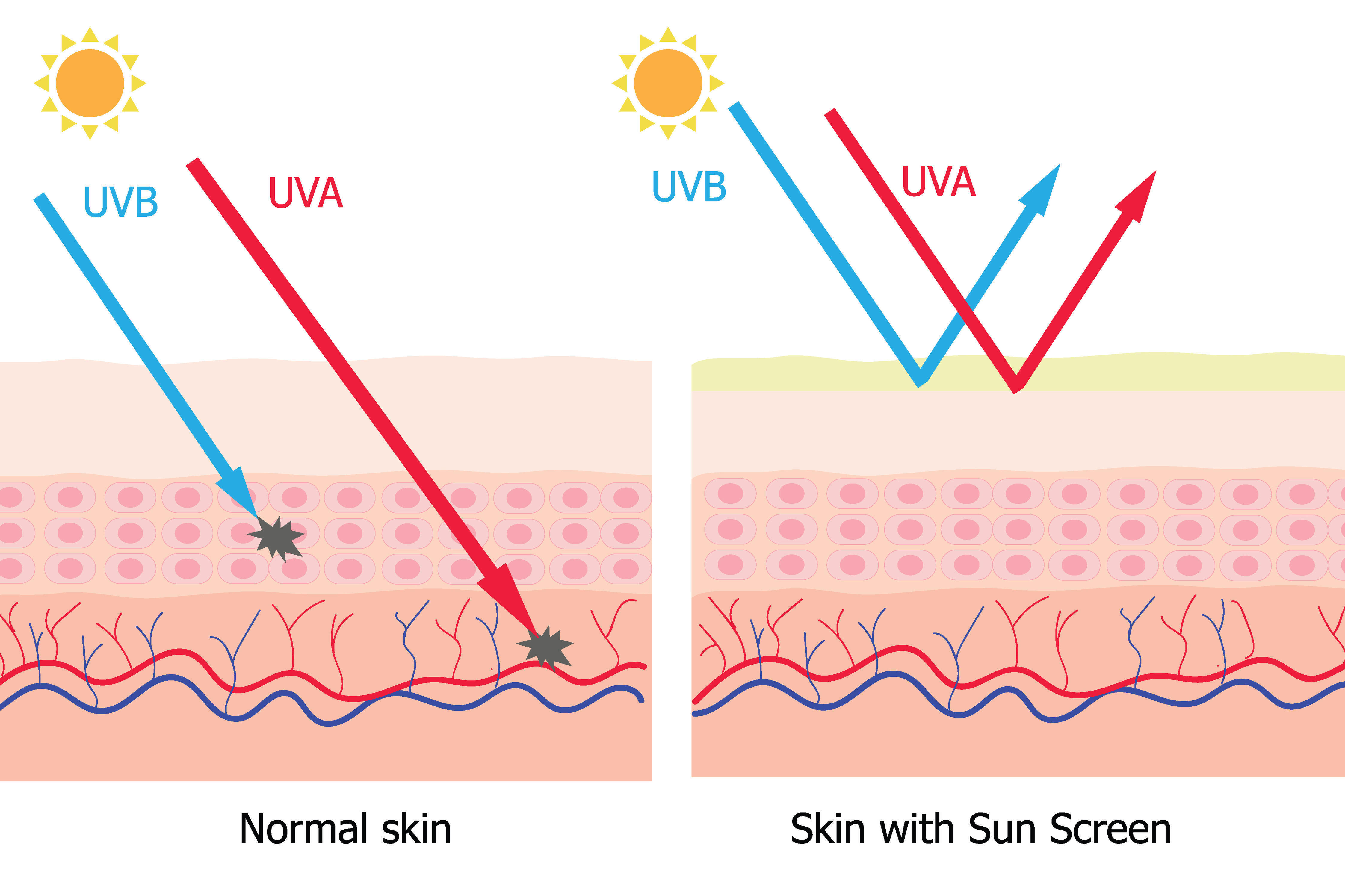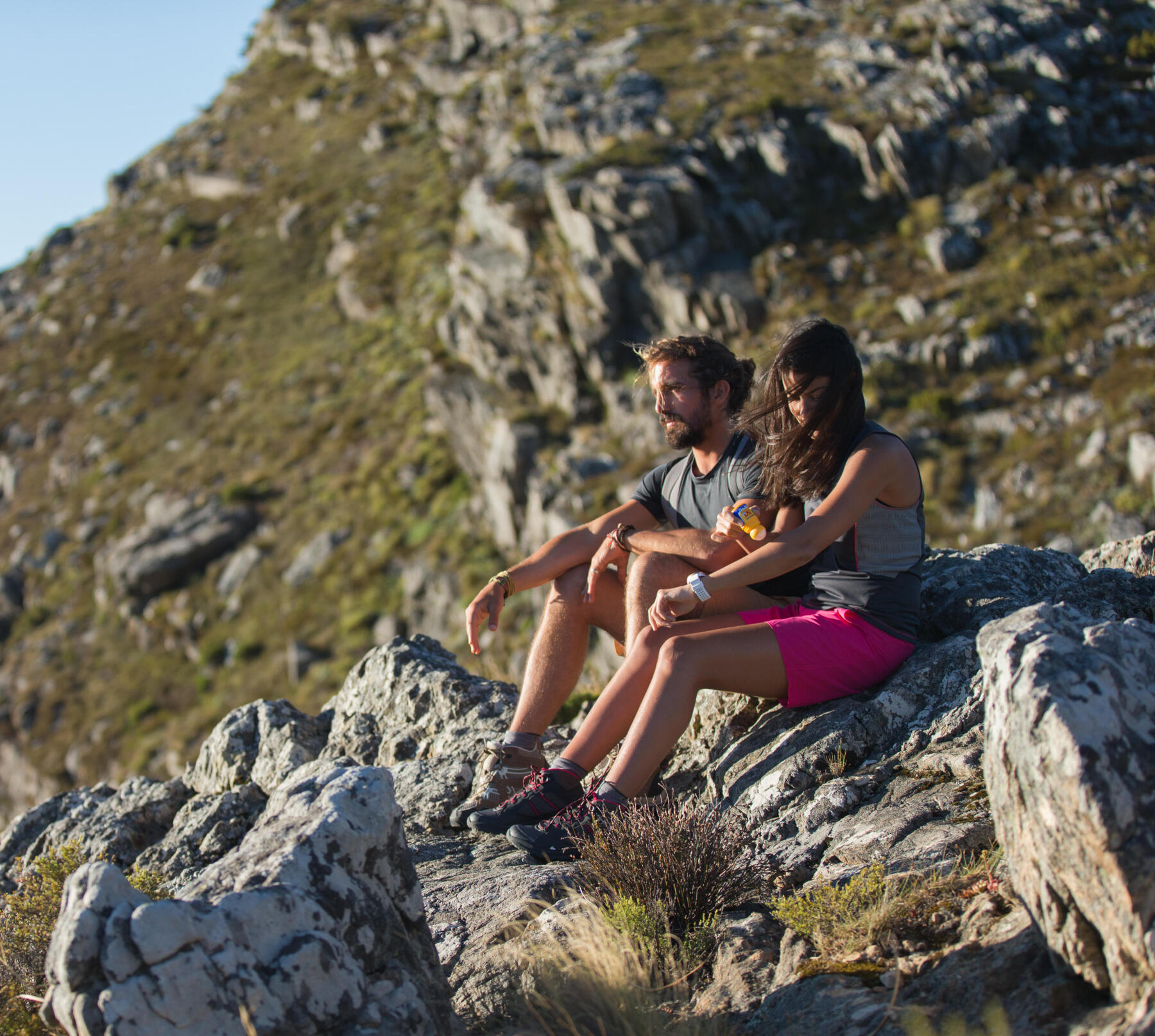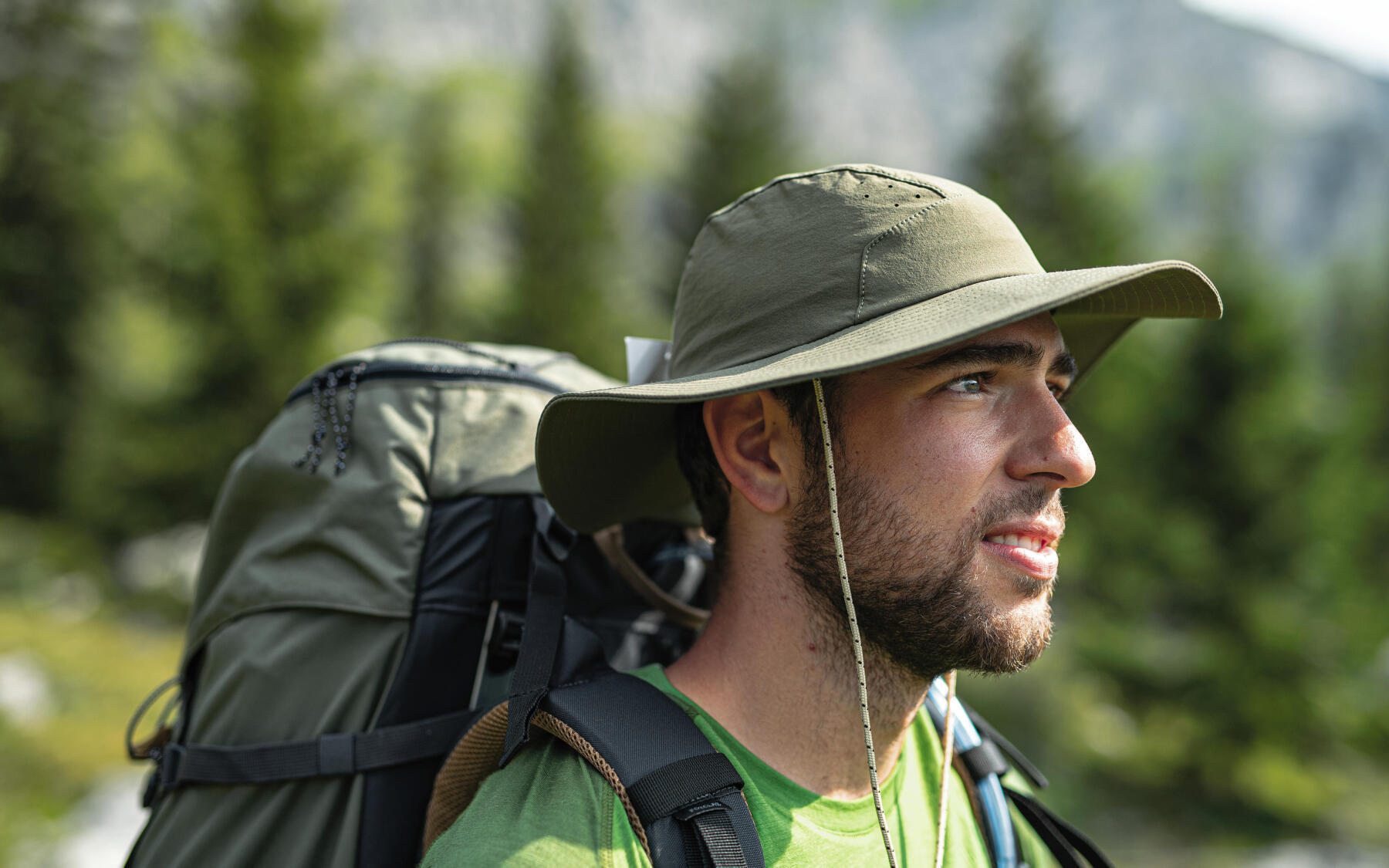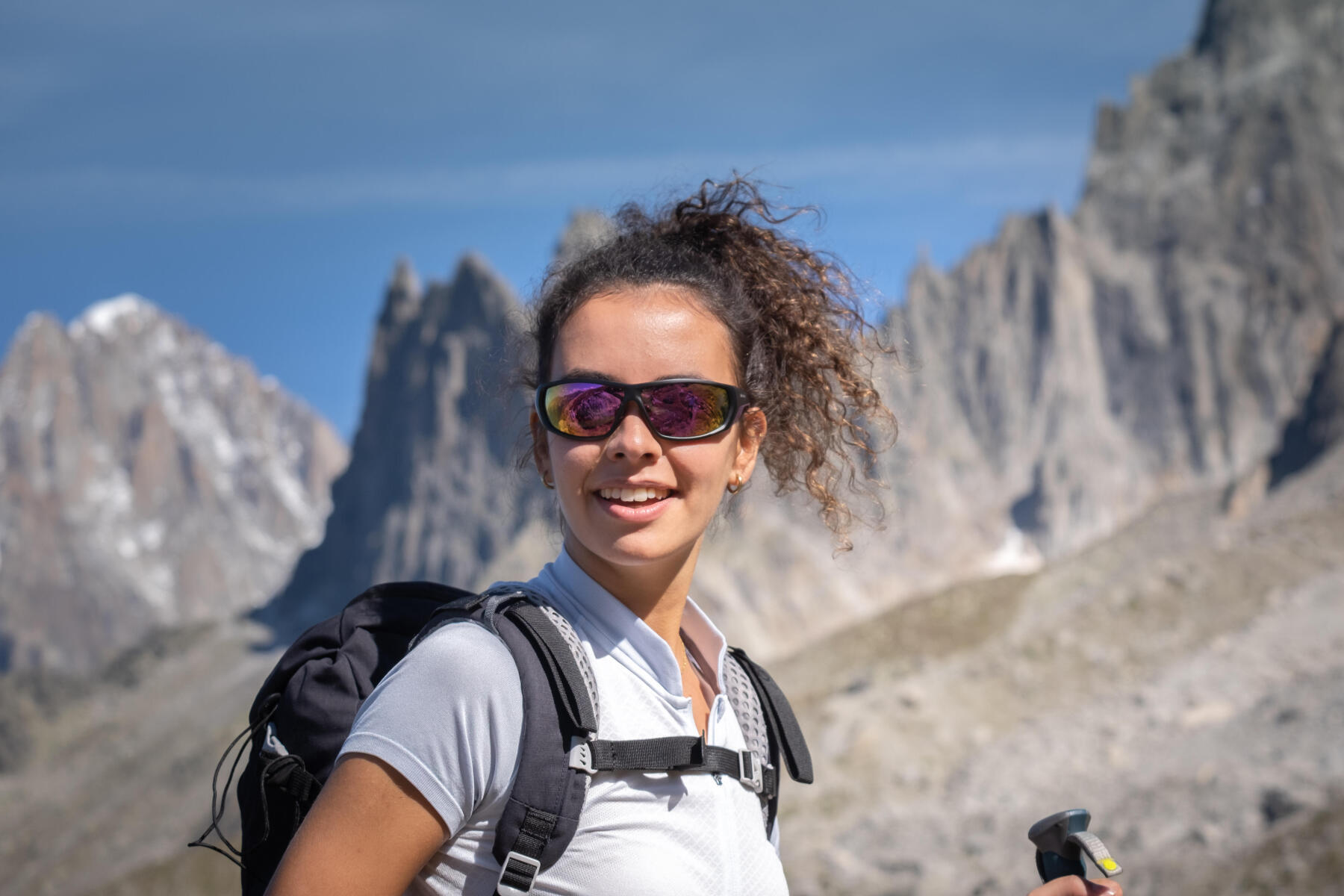2/ How can you protect your skin from the sun
To protect your skin from the sun when in the mountains, we suggest 2 very effective solutions. UV clothing and sunscreen are the perfect combination to help prevent any sun-related problems.

Get ready for your next mountain excursions. You know it's important to protect yourself from the sun as it's particularly strong at high altitude.
In this article, we set out everything you need to know to help you prepare properly and avoid sunburn.
Did you know that in the mountain there is less atmospheric filtering of UV rays and radiation increases by 4% with every 300 metres of positive elevation gain? If you also factor in the cooling effect caused by the wind at altitude, then you'll understand why it's important to protect yourself from the sun even if you feel less need compared to when on the beach.
-Start your hike early before the sun gets too strong
-Apply sunscreen regularly, before and after hiking, even if it's cloudy.
Wear clothing with built-in UV protection.
-Avoid intense physical activity and remember to take a break when the sun is at its strongest
-On days when it's really hot, opt for shady routes and/or routes near water.
-Avoid dehydration by taking enough water and drinking regularly.
-Cover your head to prevent sunstroke.
- Protect your eyes.
There are two types of UV radiation that pass through the ozone layer:
- UVB rays: They cause sunburn and blisters, and can also cause skin cancer and eye damage.
- UVA rays: They penetrate the skin more deeply and cause premature skin ageing (brown spots and wrinkles).
Sunscreen is a good defence against the sun's rays without preventing the tanning process.

When spending time in the sun, particularly in the mountain, you need to do it safely.
Repeated, intense exposure can have adverse effects. It can damage your skin and eyes and increase the risk of skin cancer.
A tan is a sign that your skin has been damaged by the sun. Whether it's a tan produced by natural sunlight or a tanning bed, you will increase your risk of skin cancer.
If you are taking prescription medication, check that it doesn't prohibit or warn against sun exposure. You could put yourself at risk. Check with your doctor or pharmacist to find out if your medication causes increased photosensitivity.
To protect your skin from the sun when in the mountains, we suggest 2 very effective solutions. UV clothing and sunscreen are the perfect combination to help prevent any sun-related problems.
Trousers, shirts and T-shirts are an easy way of protecting the most exposed parts of your body without even thinking about it. But not all clothing provides equal protection: a light cotton T-shirt will let some UV through while a tight weave offers better protection than a loose or stretch weave because, when the stitching stretches, it loses its protective properties. A damp garment will also be less effective while a loose garment will offer more protection. And finally, washing can improve the UPF* of cotton! (So it's important to always wash clothes before wearing them).
In addition, it's still important to apply a layer of sunscreen to your skin. Ideally, you should wear UV-certified garments that guarantee optimal protection: long sleeved shirts (Men), Tank tops (Women) or windcheaters, for example.

the UPF 40+/ 50+ label guarantees compliance with European standards:
- A UPF 40+ rating means that 97.5% of the rays are blocked
, while the 50+ rating means that more than 98% of the rays are blocked.
*UPF = Ultraviolet Protection Factor.This measurement indicates how much UV radiation is absorbed by a material.

When in the mountains, it's important to apply a higher level of protection and more frequently to avoid sun burn and overexposure.
When deciding on a suitable sunscreen, first of all you need to choose a protective factor to match your skin and colouring. The lighter your skin colour and eyes, the higher protective factor you will need (SPF 50- or 50+).
You can also get yourself a "lip balm" as the sun can trigger cold sores in susceptible individuals.
The sun protection factor or SPF measures the level of protection offered by sun products against UVB radiation.
The different categories:
Low protection: SPF 6 or 10
Medium Protection: SPF 15, 20 or 25
High Protection: SPF 30 or 50.
Very high protection: SPF 50+
When at high altitude, in the mountains, you'll be exposed to more UVA and UVB rays. You'll need higher protection than normal to prevent sunburn.
Each skin type has a different resistance to sun exposure. Protection based on the intensity of UV radiation, the length of exposure and the activity in question. Your sensitivity to UV rays will depend on the colour of your skin.
You have very light skin, you burn and you don't tan. Avoid sun exposure. You need maximum protection: long clothing, a hat, glasses, sunscreen with a high protection factor (SPF 50+)
You have light skin, you burn and don't tan easily. Avoid excessive sun exposure. You need maximum protection: long clothing, a hat, glasses, sunscreen with a high protection factor (SPF 50+)
You have a light olive complexion, you don't burn quickly and you tan easily. Limit your exposure. You need good protection: a hat, glasses, sunscreen with a high protection factor (SPF 30 or 50)
You have a dark olive complexion with lots of melanin. You almost never burn and you tan very easily. You need good protection: a hat, glasses, sunscreen with a high protection factor (SPF 20 or 25)
You have dark skin with a lot of melanin. You never burn and can tolerate the sun very well. You need a low level of protection: a hat, glasses, sunscreen with a high protection factor (SPF 10). On the lighter parts of your skin, use sunscreen with an SPF of 20 or 25.

Wide-brimmed hats, caps or buffs ...are essential especially to ward off sunstroke.
Some caps also protect the back of the neck which is another vulnerable area. Be sure to apply sunscreen to unprotected areas (back of neck, nose, ears).

Category 3 sunglasses - or even category 4 if you're hiking on snowfields - will be an essential piece of additional equipment. The glare of the sun reflecting off the snow can exacerbate damage to your eyes.
If you have blue or light coloured eyes, you need to protect them even more as they will be more susceptible.
If you fail to do so, you run the risk of developing a number of eye conditions linked to over-exposure. The most common affliction is photokeratitis which, although temporary, is very painful.